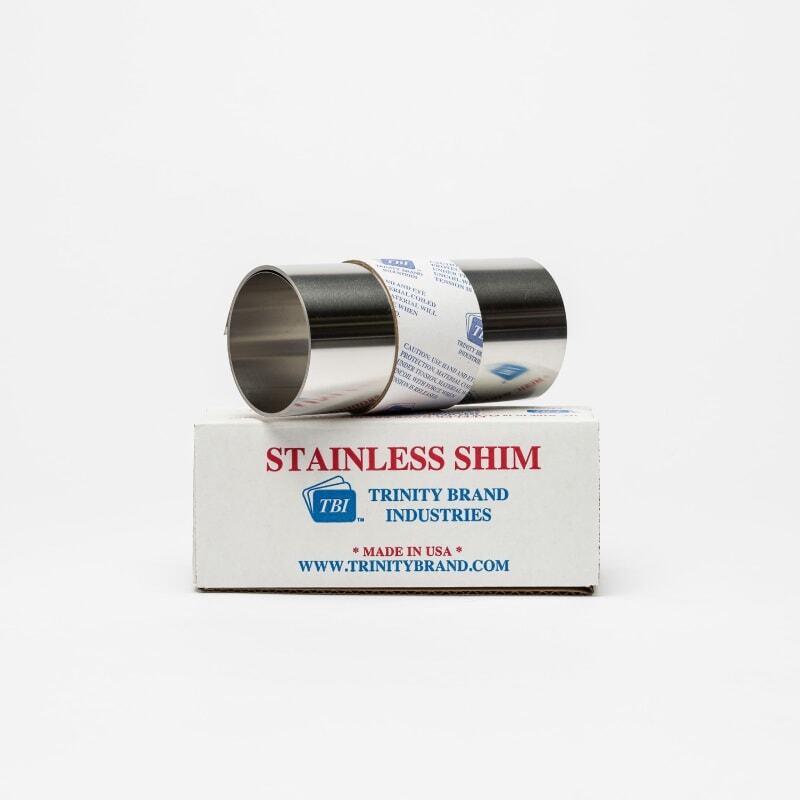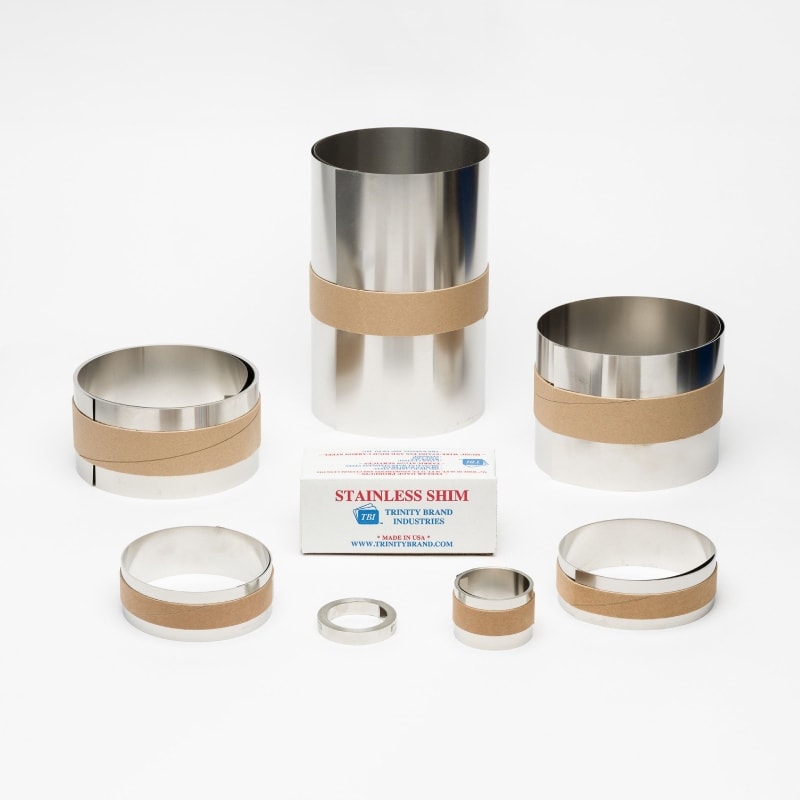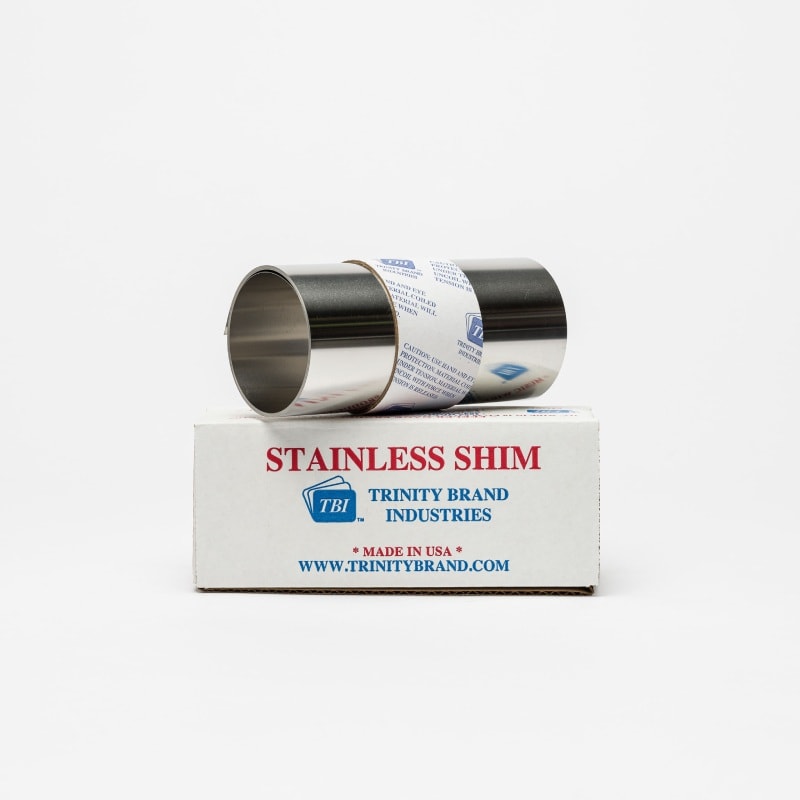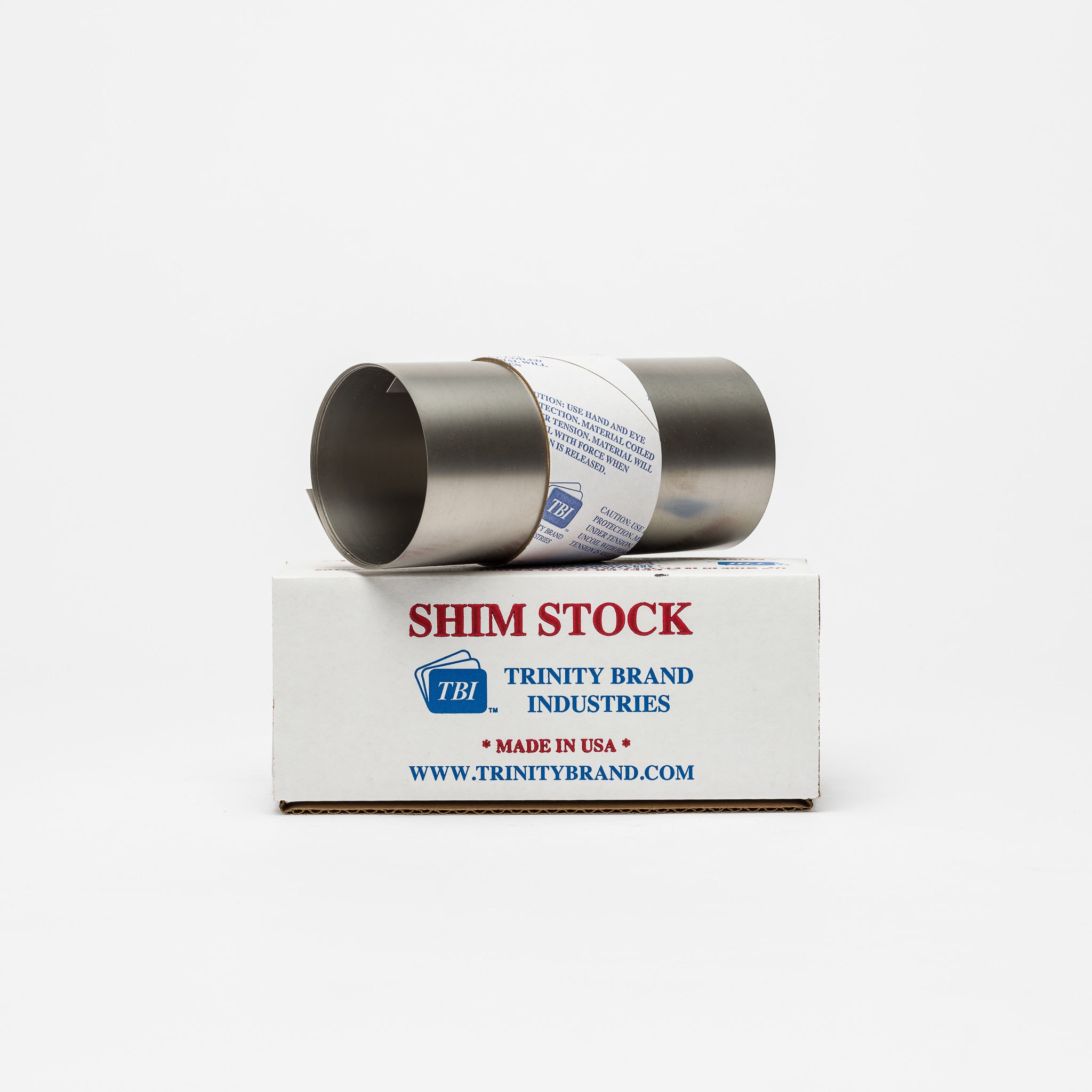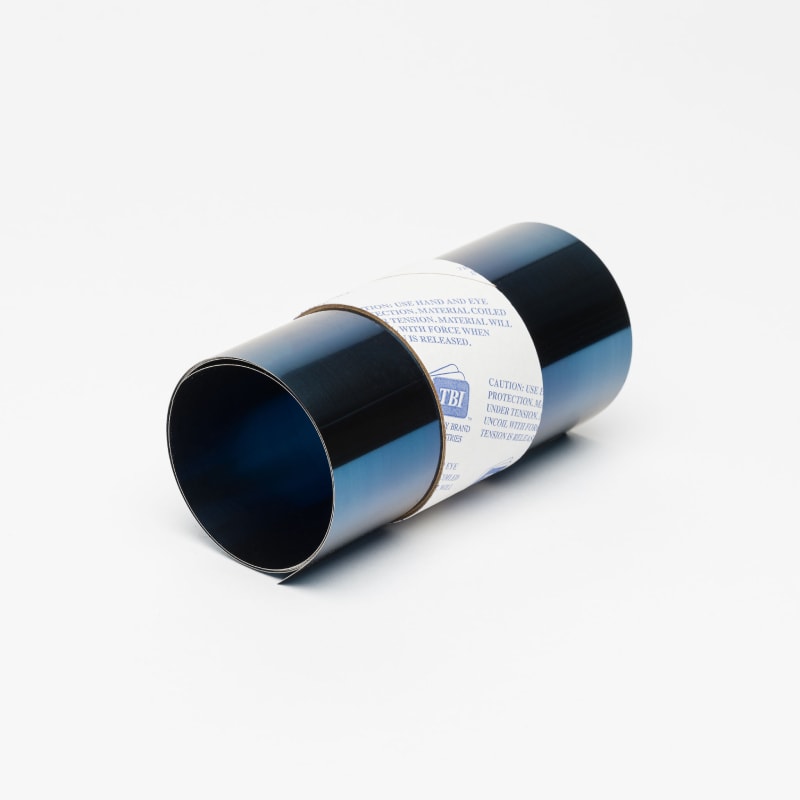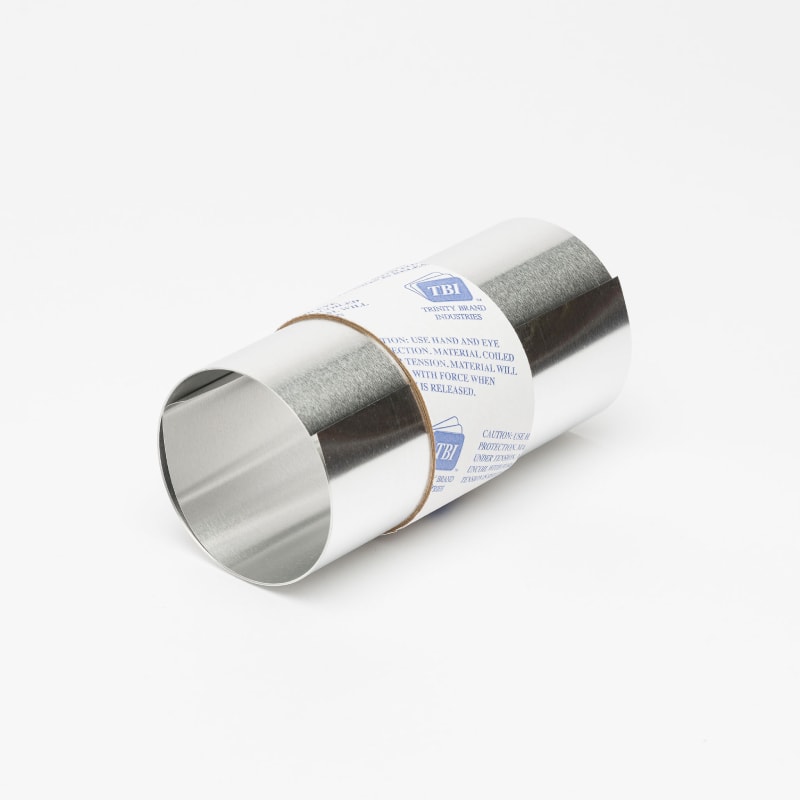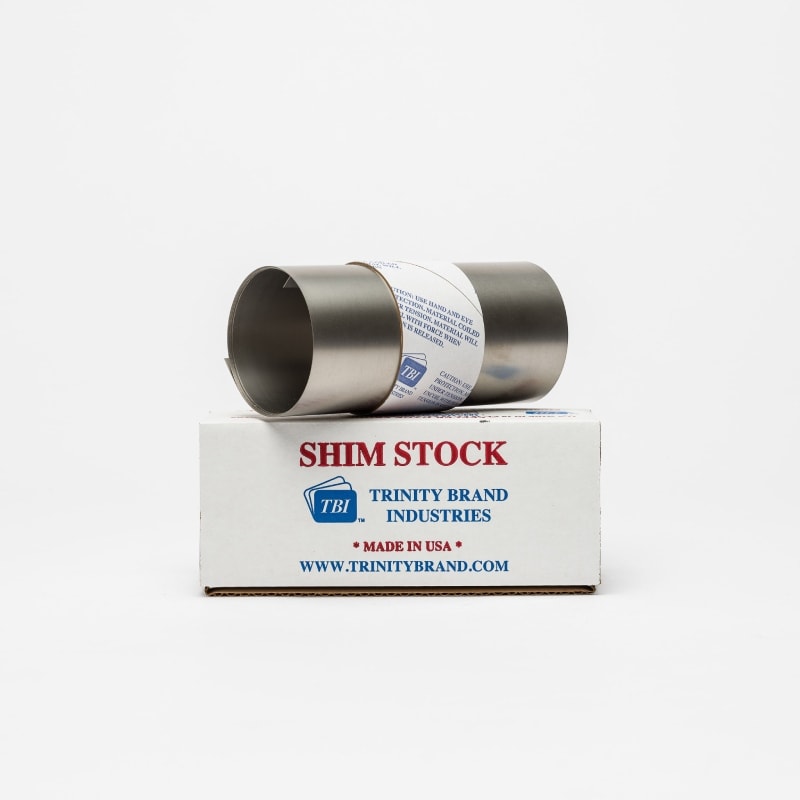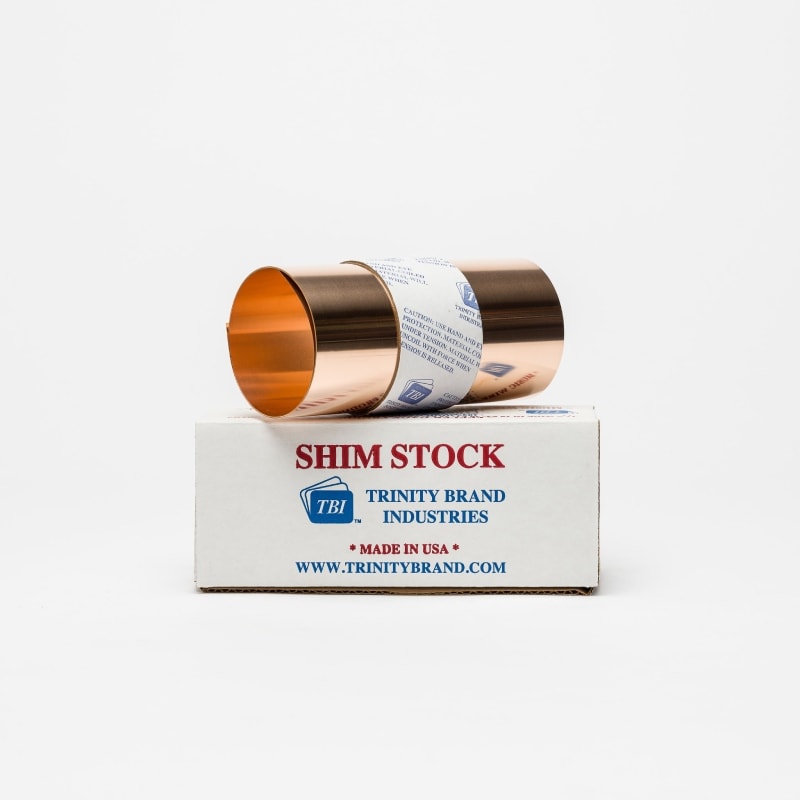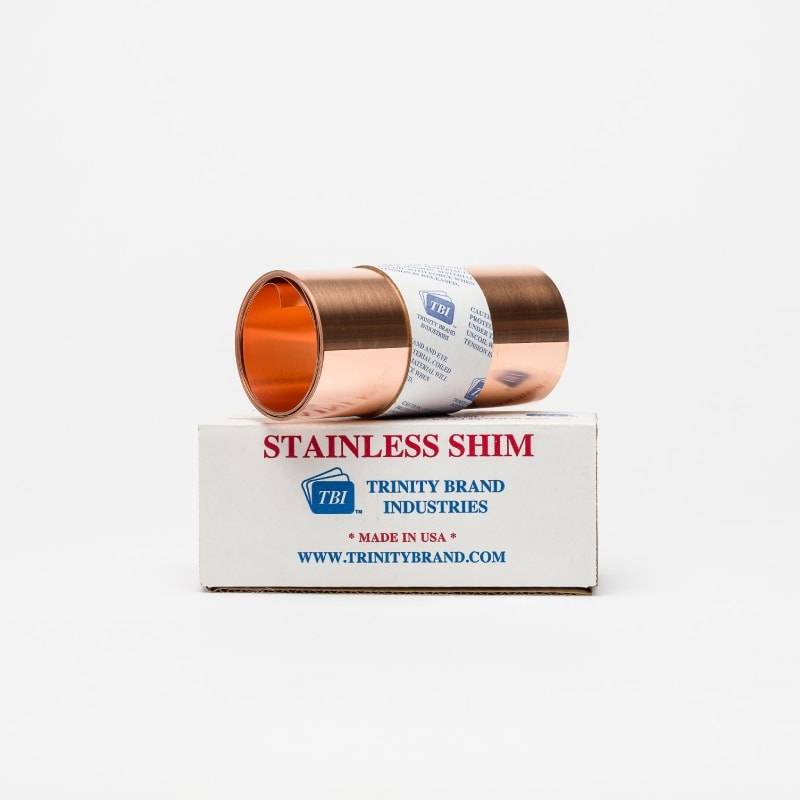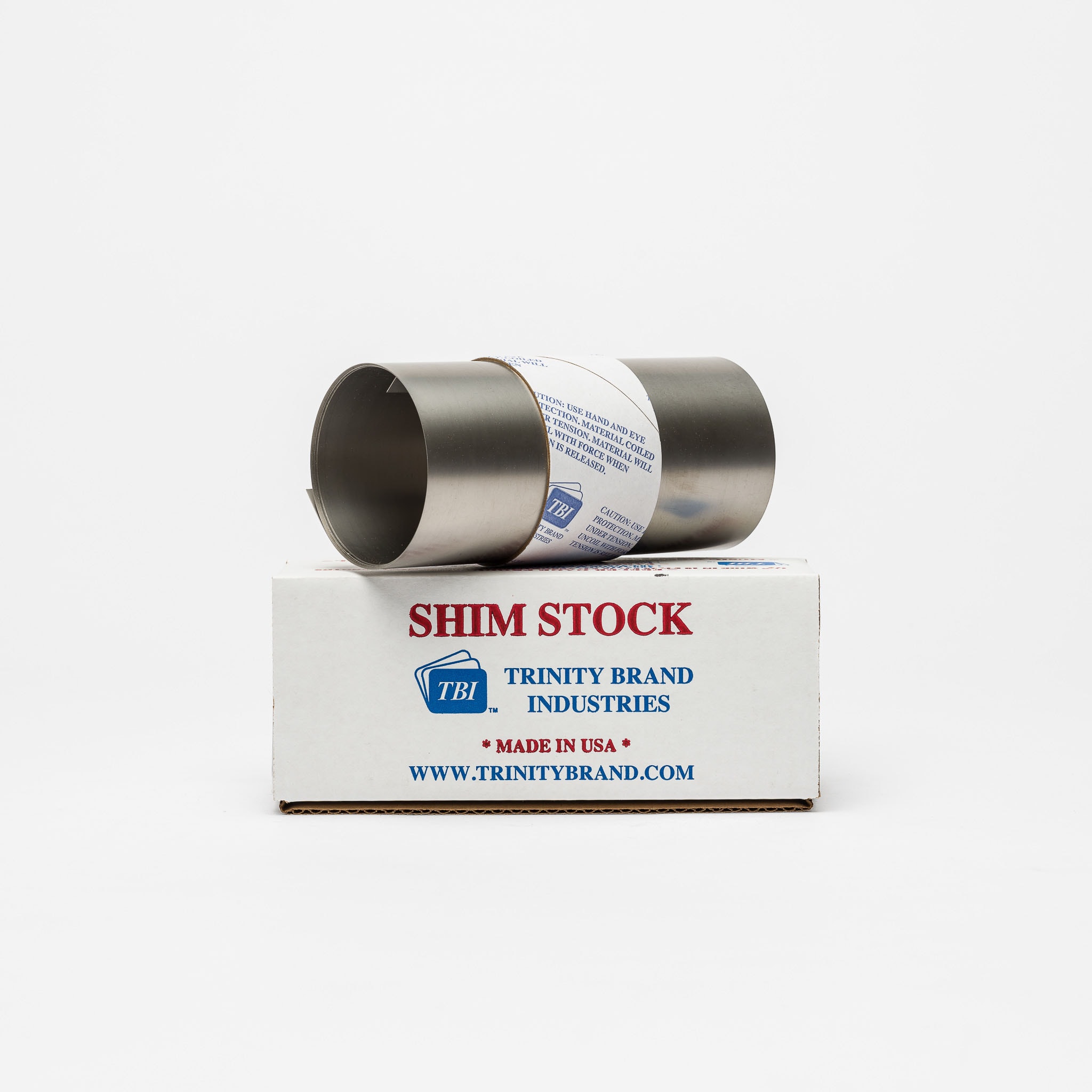What is Shim Stock?
A shim stock is a roll of thin gauge metal or foil used to create shims. Thin gauge cut sheet metal may be as thin as 0.0005 inch (0.0127 millimeter) to allow for fine positioning adjustments.
Since the material is so thin, stock can easily be cut into custom shapes using standard tools such as metal shears. For more complex shapes, or to achieve greater precision, users may also rely on stamping, laser cutting, water jet, machining, or other metal fabrication processes to customize their shims. Common stamped shapes include rings, which improve alignment and prevent axial motion, U-shaped slotted shims, which fit around screws to align and level equipment and flat shims to adjust the height of die sets.


